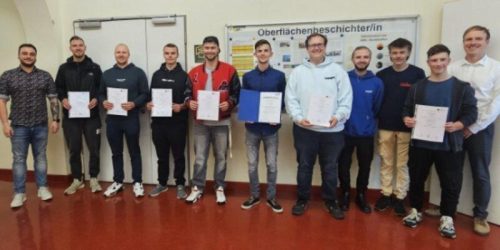
Intelligent safety technology: IAV and TU Berlin develop new method for commercial vehicles
"Until now, the driver has assessed whether a road is damp, wet or icy and adapted driving style and speed accordingly", says Dr. Hubertus Ulmer, Team Leader Commercial Vehicles eMobility, Systems Engineering & Validation at IAV. "We want highly automated commercial vehicles to be able to assess road conditions by themselves in the future."
As part of a research project put out to tender by the Federal Highway Research Institute (BASt) (FE 82.0722/2018), TU Berlin and IAV, which the former involved in the execution of the contract, spent two years developing the technical basis for a new driver assistance system.
Friction value decisive for driving safety
This makes it possible to evaluate the transmissible force between the tire and the road surface during operation on the road and to warn the driver of a reduced coefficient of friction. Further developed and adapted to the application, this method could be used in highly automated vehicles.
The special thing about this method is that it uses existing indicators such as outside temperature sensors and rain sensors and does not require any other sensors. Only weather data is brought into the vehicle via a data connection and evaluated by using new software.
The extensive tests of braking maneuvers in a wide variety of weather conditions and on different road surfaces focused on the "coefficient of friction" resulting from the interaction between tires and road surface and the question of how well the forces between tires and road can be transferred, i.e. how effectively a 40-tonne truck can be braked.
Database with over 8,000 car-braking maneuvers
To this end, experts from IAV and TU Berlin built up a database with dozens of parameters for every braking process recorded. In particular, the braking deceleration in the longitudinal direction of the truck was measured – the data and findings from over 8,000 comparable full decelerations with passenger cars were also used.
"One thing is clear: there is a method for reliably evaluating the coefficient of friction for trucks," says Dr. Gerd Mueller, senior engineer at the Department of Motor Vehicles at TU Berlin. "Models that have been developed for passenger cars at our department in recent years can easily be transferred to trucks. During the research project’s validation drives, the method proved to be robust and fully functional."
Based on the joint development project, IAV has equipped the test vehicle with measurement data technology, carried out the test drives and evaluated the measurement data. On 8/9 November, IAV will present the project at the VDI symposium "Tires – Chassis – Roadway" in Karlsruhe.
Intelligent safety technology: IAV and TU Berlin develop new method for commercial vehicles | IAV
As one of the automotive industry’s leading global engineering and technology partners, IAV develops the digital mobility of the future. The company has been developing innovative concepts, methods and solutions for 40 years and generated sales of 837 million euros in 2022.
With 7.600 employees, IAV brings together the best from a wide variety of worlds: Automotive and IT world, hardware and software world as well as product and service world. In addition to vehicle and powertrain development, the company focused on topics such as e-mobility and autonomous driving at an early stage and is now one of the leading technology providers in these fields.
Alongside its development centers in Berlin, Gifhorn and Chemnitz/Stollberg, IAV has further locations in Germany including Munich, Sindelfingen and Ingolstadt, as well as in Europe and Asia and in North and South America.
IAV GmbH Ingenieurgesellschaft Auto und Verkehr
Carnotstraße 1
10587 Berlin
Telefon: +49 (30) 3997-80
Telefax: +49 (30) 3997-89790
http://www.iav.com
Externe Kommunikation
E-Mail: presse@iav.de
![]()




